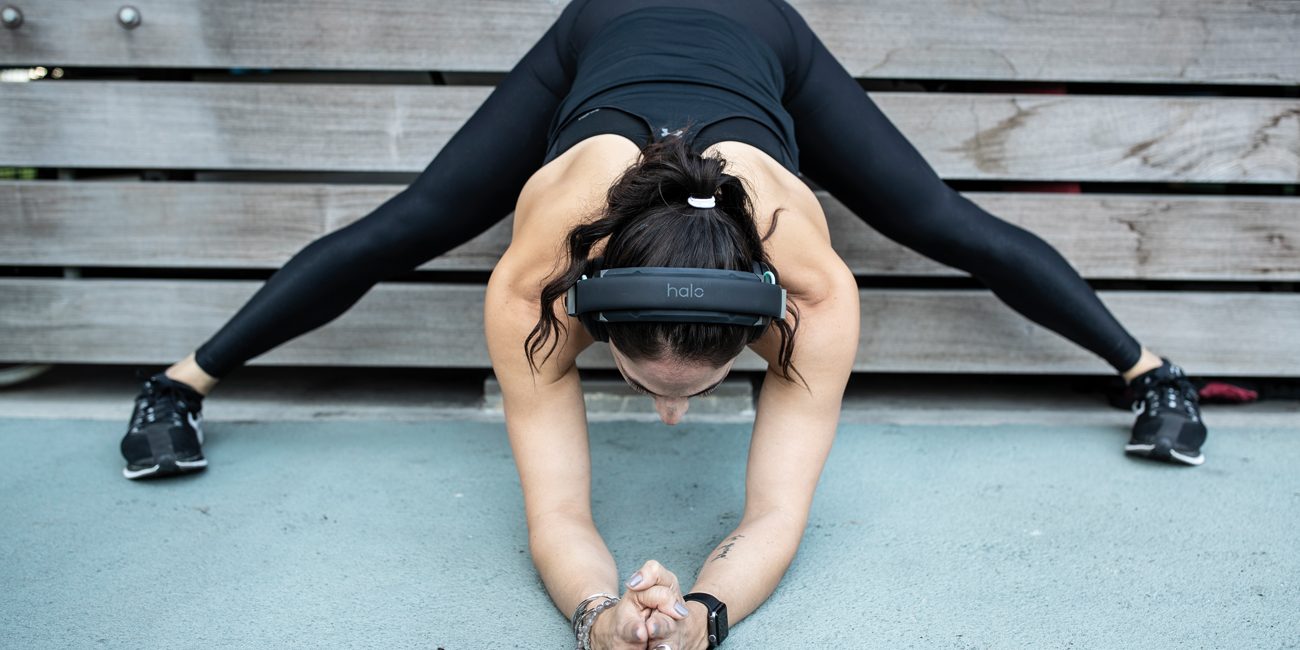
The Halo Effect
When yoga goes tech: biohacking your way to a better practice. By David Holzer
YOGA & TECHNOLOGY
Take away the ancient religious and spiritual goals of yogaand what you have is a tool to enable biohacking. That is, a way of improving physical and mental health using exercise and lifestyle. As yoga changes and fewer people identify with the spiritual dimension — no judgement — technology that enables biohacking is gradually making inroads.
I first heard about Halo Neuroscience from Lia Ditton, the remarkable athlete and adventurer training to be the first woman to row solo across the North Pacific Ocean. When I interviewed her for this magazine some time ago, she told me how intrigued she was by Halo Sport, the company’s first product. Here’s how Halo Neuroscience
describes its baby: ‘Designed to integrate seamlessly into a workout, Halo Sport stimulates the brain’s motor cortex during training to accelerate improvements in strength, skill and explosiveness.’
This process of stimulation is called Neuropriming and it builds a stronger, more effective connection between the brain and muscles. It also puts the brain into a condition of hyper-learning or ‘hyperplasticity’, enabling us to train more effectively.
Founded in 2013, Halo Sport has been sold to the general public since 2016. In that time, according to chief marketing officer, Mark Malastir, “We’ve sold more than 30,000 of the original product and Halo Sport 2 and done well over 450,000 Neuropriming sessions. We sell a lot of products to lifelong athletes who work out four to six times a week. They might be weight lifters, power lifters, crossfit athletes or runners as well as yogis. The US military is one of our biggest customers as well as navy special ops and pilots. Musicians are about 20% of our audience, people who want to play an instrument faster and more precisely.”
It’s all about transcranial current stimulation
Unlike most wearable devices, Halo Sport doesn’t just measure brain activity. It delivers energy via a beautifully-designed set of headphones. Electrodes positioned in the device transmit a small electrical current to your motor cortex, the area of the brain which sends commands to your muscles, via rubber primers. This is called transcranial
current stimulation (tDCS).
Your motor cortex is conveniently located below where the band of the headphones crosses your skull.
To get started, you wet the rubber primers so they conduct properly, position the Halo Sport tight to your head and select the Neuropriming programme you’d like using
the associated smartphone app. This is connected to the device via Bluetooth, which means you can also listen to music. You can choose between Legs, Core & Arms for the larger muscle groups or Hands & Fingers for fine motor skills. It’s also possible to increase amplitude which, I guess, makes tDCS more powerful. Each Neuropriming session lasts 20 minutes and sets up your brain for an hour of enhanced neuroplasticity.
Users like doctors or musicians are recommended to use Hands & Fingers and can choose which hand to work with. Us yogis should use Legs, Core & Arms
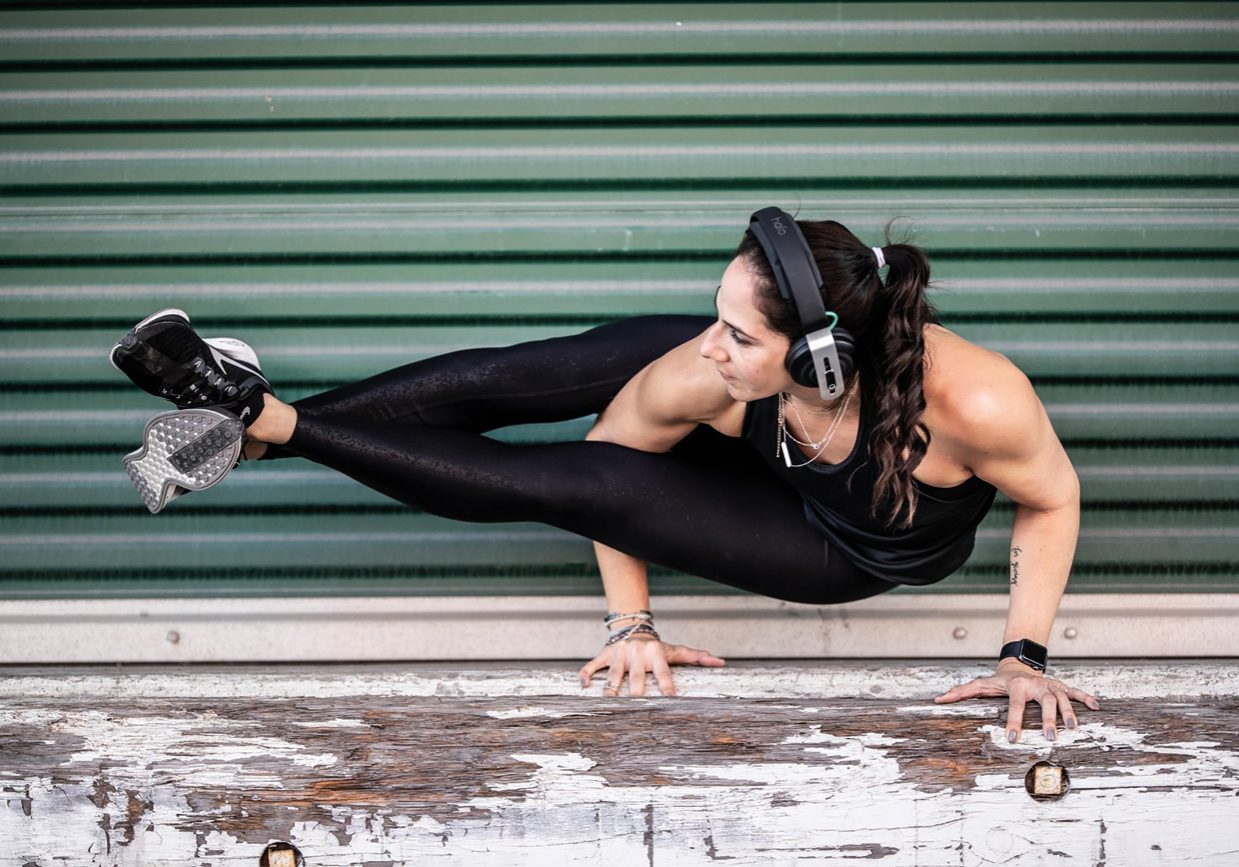
Why is Halo Neuroscience targeting yoga?
I asked Halo’s partnerships manager Danny Holzman why yoga?
Think of Halo Sport as a movement learning tool,” he said. “Yoga is partly about learning how to move in certain ways, right? Like any other form of training. The applications for yogis tend to be with strengthening the core, arms and legs for power and balance. Research shows that tDCS helps with balance. That’s because
balance has a lot to do with being able to stabilise your muscles in the right way. Balance is learnt.”
Halo Sport has been selling at a little under $800. The newer, enhanced model, Halo Sport 2, retails at $299. That’s quite expensive for a training aid. How did Holzman see the market for Halo Sport in yoga? “It could be something a studio or teacher could invest in to offer their students. For example, we have a partnership with Equinox, voted best gym in America by Fitness magazine. Some instructors offer clients Halo Sport.”
What about spirituality?
One of the great debates in yoga, especially now it’s increasingly recognised by many as an ‘industry’, is where the spiritual tradition fits in. For some of us, using tech is at odds with unifying consciousness and body to connect to the universal. How would Holzman address this?
“The important thing is to not see Halo as intrusive. Also, you’re not getting anything for free. You still have to put in the work. So, if you practice deeply, you’ll see more benefits using this technology. If you don’t, you won’t. There’s also the fact that many people are intimidated by learning new activities, whether it’s yoga or playing guitar. If we can help someone learn yoga, it’s good for them and the rest of us because we all know the world would be a better place if more people did yoga. Don’t forget, we’ve thought a lot about the ethical side of what we’re doing. There’s nothing sensationalist about our technology. We’re all about using tech in a sensible, healthy way.”
Personally, I know my enjoyment of my practice and the effect it has on me are definitely enhanced by muscle strength, balance and coordination. I’m open to anything that helps me develop these. But, to find out if Halo Sport really did work for yogis, I needed to talk to one who’d been using it for a while. Halo introduced me to San Francisco Bay Area yogi Shauna Harrison.
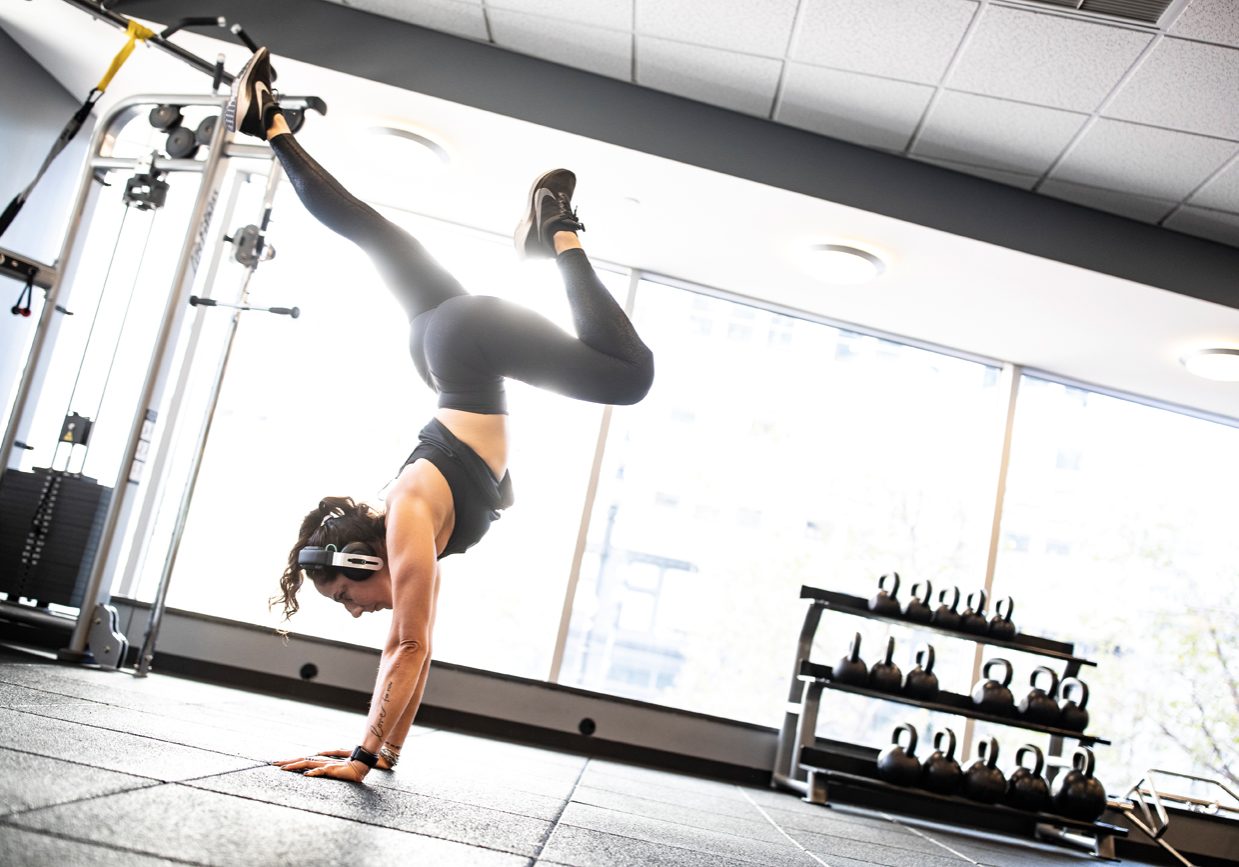
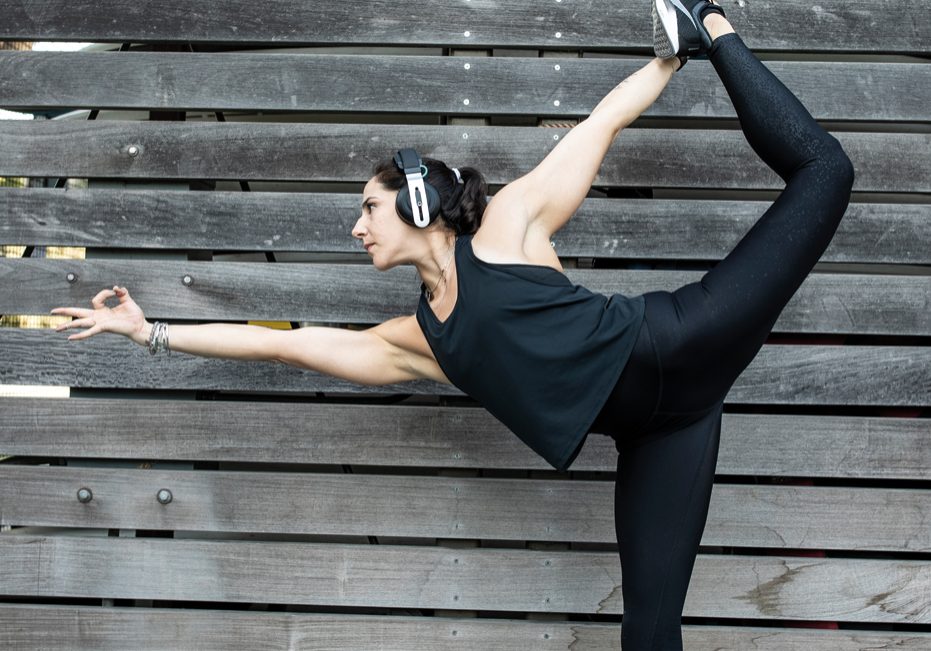
Shauna Harrison: nerd, hip-hop head, jock and yogi
This is how Harrison is described on her website. It adds: ‘Through her unique style and authenticity that blends her love for hip-hop, wellness, yoga and knowledge of public health, Shauna has created a brand of her own.’
In practice, Harrison told me, she “took a bunch of things and combined them. I wanted to create a yoga class I thought might bring in people who were put off by yoga for various reasons.”
Harrison’s sports and fitness background made her receptive to working with Halo. As a PhD, she also has an affinity for research. “I was drawn to how research-driven Halo is. I also grew up in the Bay Area, so I’ve been surrounded by tech my whole life. But I like to test things out for myself too.”
What results did Harrison get from using Halo Sport in her yoga practice? “First off, I have to say I’ve never been purely about yoga. I train in a multitude of different ways. I started to use Halo for strength and conditioning. In general, it helps me focus and learn things quicker. The focus side applies to yoga, for sure. I’d say Halo helps prepare muscles to fire for power and balance. It also enhances muscle memory, essential for learning a new asana or any kind of movement.”
How about balance? “Definitely. I had a full hamstring avulsion injury on my left side. It’s why I do so much strength and conditioning. I use Halo Sport to equalise my balance. I’ve noticed it’s much easier to get everything to work together.” That sounds like Harrison is consciously directing her focus. How about setting an intention while using the device? “I think it helps even more when you’re super-intentional like in yoga. When I was wearing it hill-running I was determined to run the first hill as quick as I could. Halo helped me get faster.”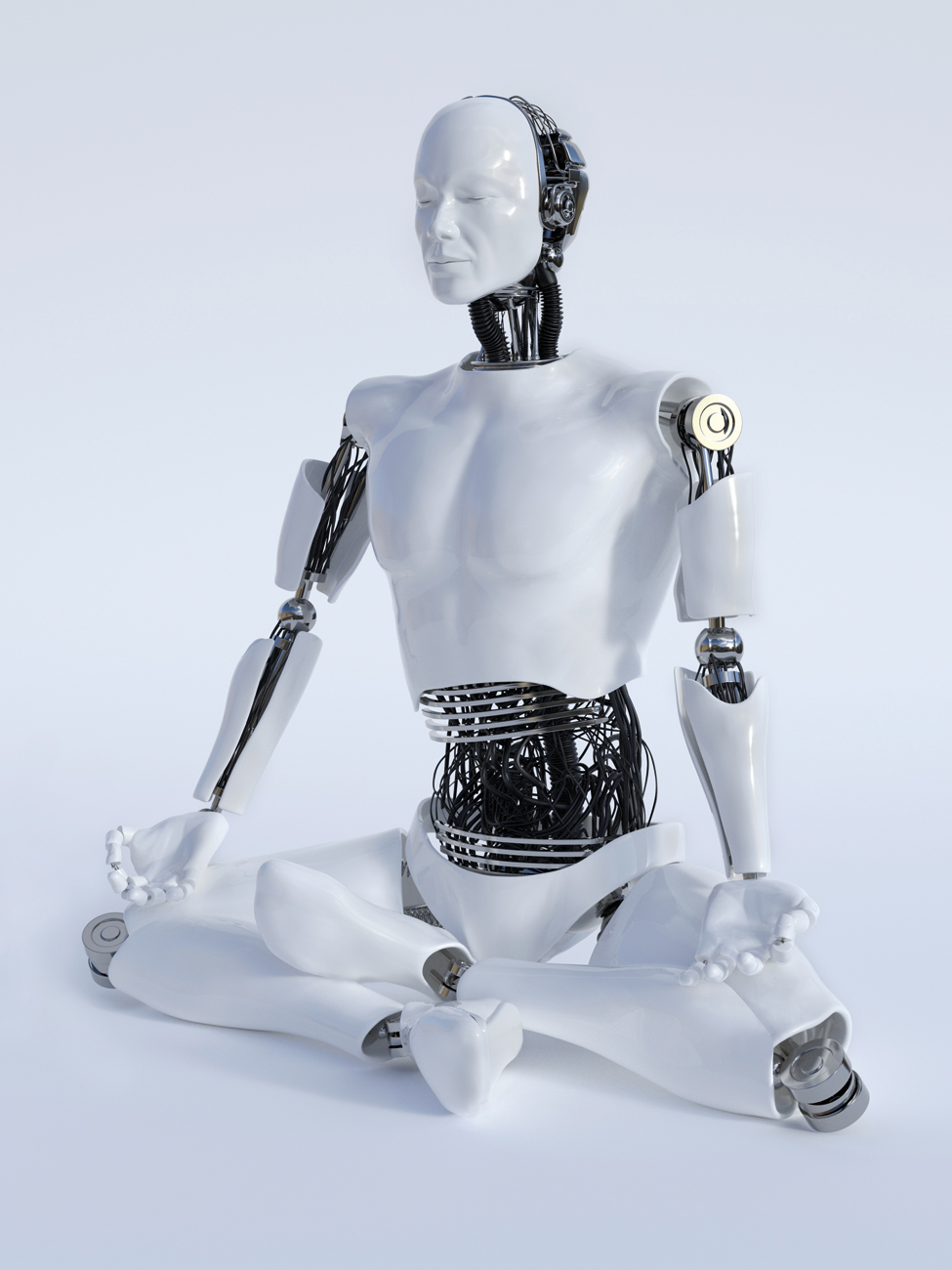
Harrison has no doubt that it works. What about tech and yoga philosophy? “I respect all aspects of yoga and have studied them through my certifications. I just don’t speak to yoga philosophy the way most people do. I think there’s a time and place to use tech in yoga. It might not be appropriate for specific forms of yoga or something like a silent meditation retreat. But if tech is going to offer a way in to someone or enhance their practice, without taking them out of the whole scheme of what yoga is, I really don’t see any problem. If you have the means to use it and you’re curious about the brain and body, which most yogis are, I’d recommend trying Halo Sport.”
Me and my Halo Halo
Halo Neuroscience very kindly gave me a device to test. It was simple to set up and the app is nicely designed. I experienced a not unpleasant tingling in my scalp when the Neuropriming started but soon forgot about it. The only drawback for me was that I couldn’t practice forward bends or inversions of any kind without the device
making a pinging noise to tell me the primers weren’t properly connected to my skull.
I’ve been using my Halo Sport for the past couple of months and I’ve noticed that I sometimes feel more energised when I start my yoga practice. I wish I could say I’ve seen a marked improvement in my balance, but I still fall over when I close my eyes in Tree pose.
Reading around, I came across plenty of support for Halo Neuroscience. Its most vocal champions include lifestyle guru and founder of Bulletproof Nutrition Dan Asprey. Ben Greenfield, self described ‘relentless self-experimented biohacker’ and one of the most influential people in health and fitness, is also a fan.
I’m not quite a fan, yet. I think I need to find a more rigorous way to measure my progress using the device. There’s also the question of whether the ritual of wetting the rubber soft-toothed primers, clapping on the device and connecting to the app is priming me to believe my Halo Sport works so it does. That’s no bad thing.
As to the bigger question about the place of tech in yoga, I would agree that it can be useful for home practice (such as smart mats to improve alignment). But I’d find it rather alienating to be in a class where yogis wore headphones or Nadi X smart yoga pants or followed the instructions of a teacher via an intractive mirror device or a hologram.
Find out more about Halo Sport at haloneuro.com David Holzer is a writer and passionate about music and yoga. He runs a popular yoga for writers course: yogawriters.org Do you have a story to tell about yoga and technology? Get in touch: editor@ommagazine.com


